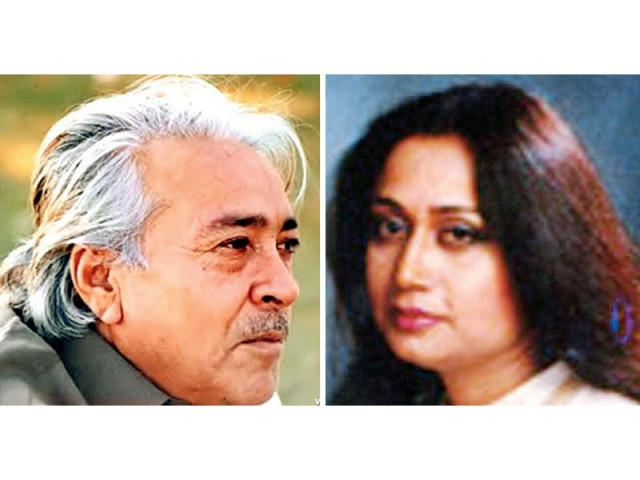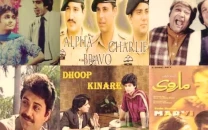Rhyme and remembrance: Parveen Shakir and Munir Niazi's legacy
December 26 can be termed as one of the darkest days in the history of our language

Parveen Shakir

Parveen, daughter of Syed Shakir Hussain’s was born on November 24, 1952, in Karachi. Having studied at Karachi University, she initially opted for teaching at her alma mater. Shakir also attended Trinity College and Harvard University and pursued a career in government service. She married Dr Naseer Ali in 1976, a relationship that culminated after 11 years of turbulence.
Shakir’s works vividly underscore feminine instincts and sentimentality. The temporal dimensions of her creations are particularly interesting. Women writing poetry has always been a stigmatised practice. Shakir shattered the stereotype with blatant charm and altered the course of history. Her matchless methodology of inking emotions gained widespread acclaim, a laurel held by Shakir alone. Her literary prowess was fostered by Ahmed Nadeem Qasmi who published most of her early works. Shakir’s first book that paved way for her eminent career, Khushbu, was published in 1976. Other works include Sad Barg (1980), Khud Kalami (1990), Inkar (1990) and collections titled Mah-e-Tamam (1994) and Kaf-e-Aina, which was published posthumously. The Government of Pakistan awarded her with the Pride of Performance award for meritorious service to Urdu literature. Only a year back did Pakistan Post issue a commemorate stamp in honour of Shakir.
In 1994, while en route to work on a Monday morning in Islamabad, the ‘Poetess of Fragrance’ died in a road accident at the age of 42. She made a perennial impact on the way our society views women. Shakir is survived by her son Murad Ali.
Her tombstone reads:
Mar bhi jaoon toh kahan, log bhula hi denge
Lafz mere, mere honay ki gawaahi denge!
Munir Niazi

Ahmed Nadeem Qasmi aptly said, “Munir Niazi’s poetry simplifies complexities of the epistemological debate of truth to a great extent.” Niazi was born on April 19, 1928, in Khanpur. He led a childhood marred by family upheavals and the troubles didn’t spare him until his last breath. The man, who was in search of answers all his life, was sent off to work for the British Navy. Niazi did manage to run away from the shackles of worldly responsibilities but was never able to evade memories of troubled times. He initially married Sughra Khanum and lost her to cancer in 1985. Ashfaq Ahmed and Bano Qudsia got him to remarry Begum Naheed in a bid to stabilise the course of his life.
His poetry encircles a wide array of themes emitting from nostalgia, mythology, existential angst, seasons, surrealism, melancholy, starry nights and summer mornings. Niazi’s spontaneity was a class of its own and is admired in literary circles all over. Elements of innocence and truthfulness are conceivably the highlights of Niazi’s 13 Urdu and three Punjabi collections of works. He was awarded both the Pride of Performance and Sitara-e-Imtiaz by the Government of Pakistan in recognition of the mark he left on Urdu and Punjabi literature. Niazi breathed his last in Lahore at the age of 78 and rests in the Model Town graveyard.
Published in The Express Tribune, December 27th, 2014.
Like Life & Style on Facebook, follow @ETLifeandStyle on Twitter for the latest in fashion, gossip and entertainment.



















COMMENTS
Comments are moderated and generally will be posted if they are on-topic and not abusive.
For more information, please see our Comments FAQ